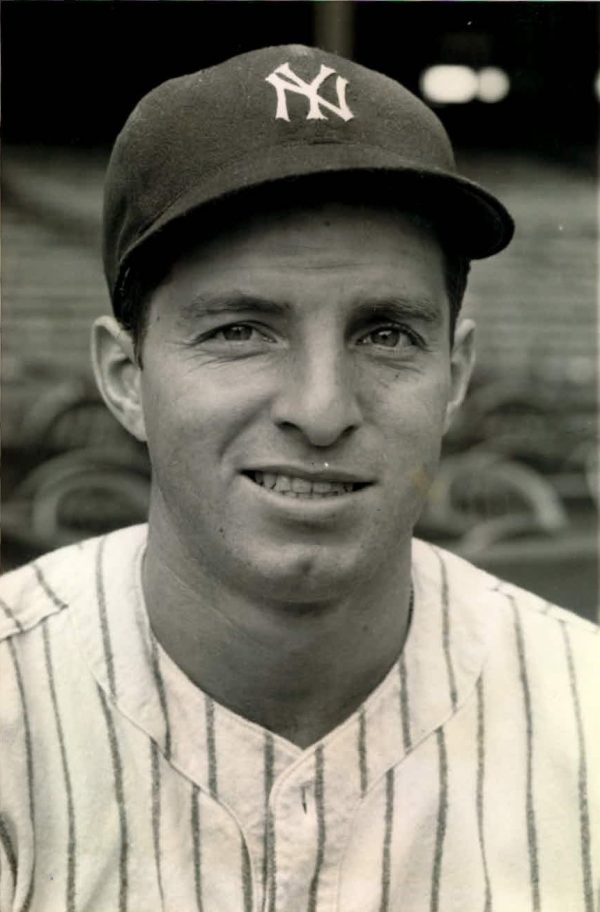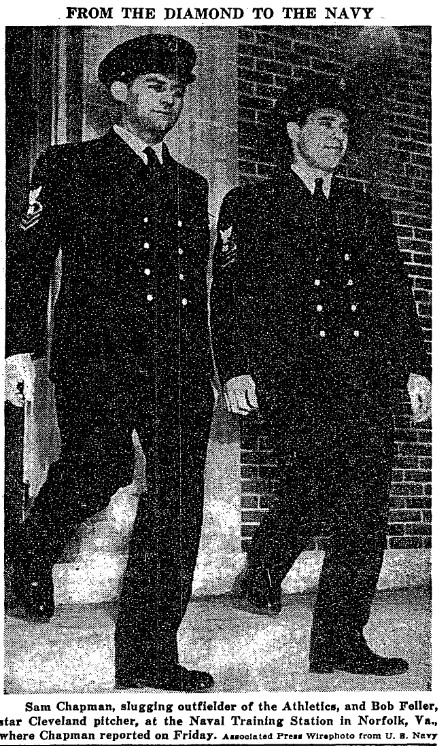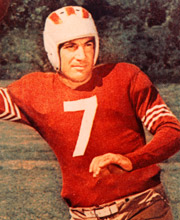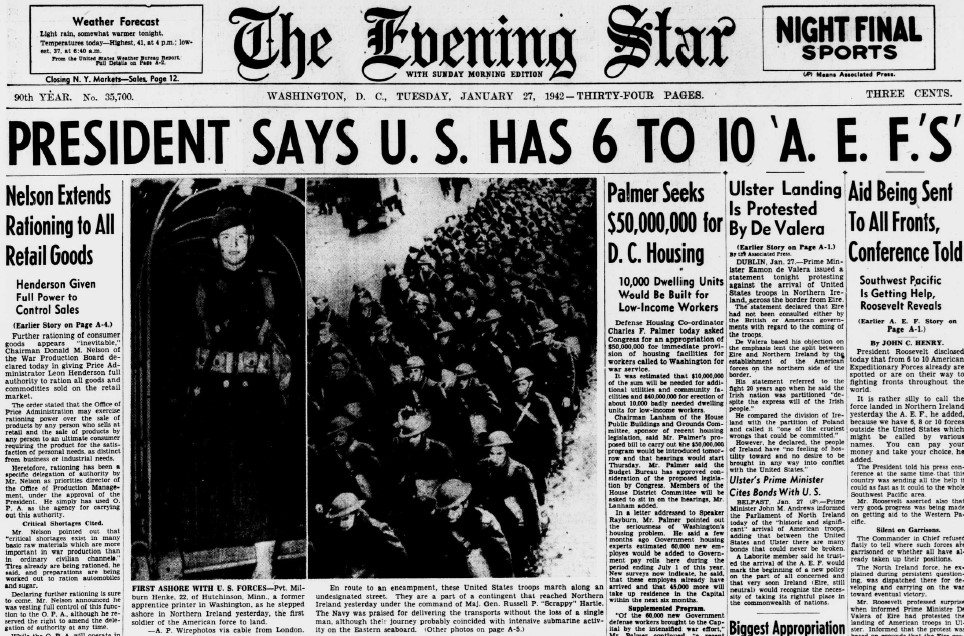World War II Chronicle: January 27, 1942
Click here for TODAY’S NEWSPAPER
Pages 1 and 2 discuss why Deputy Führer Rudolf Hess crash-landed in Scotland last year… War Department communiques 78 and 79 on page 4… Sports section begins on page 12
The Greatest Yankee you haven’t heard of?
Spring training is a month away, so it’s time to talk baseball.
Who was the hitter Bob Feller feared the most? Not Joe DiMaggio or Ted Williams, but Tommy Heinrich. “He never over-swung,” Feller said. “He made a ball be a strike and he would swing at a low overhand curve now and then. Tom would go for the single and cut down on his swing with two strikes. He was a good clutch hitter and tough to strike out — it seemed he was always looking for the pitch I was delivering.”

As we see on page three, New York Yankee right fielder Tommy Henrich is one of the many Americans recently reclassified by the draft board. finished third (behind Williams and teammate Charlie Keller) on the American League home run leaderboard last season. “Old Reliable” did strike out in Game Four of last year’s World Series, but it led to a Yankees victory. Here’s how: The Yankees were down one run to the Dodgers with two outs in the ninth inning. Henrich had run Hugh Casey to a full count and struck out on the next pitch. But Mickey Owen couldn’t catch the ball, putting Henrich on first. The Yankees then rallied and beat Brooklyn 7-4. Stay tuned for more on Henrich…
As for Bob Feller, he is training at Norfolk Naval Training Station (Va.), and is joined by Philadelphia Athletics center fielder Sam Chapman. Many great baseball players played at Norfolk, and there is a good article with videos about Norfolk’s two ball clubs here.

Speaking of former A’s, Ace Parker — whom we discussed back in October — is about to join the Navy himself. Ace was drafted by Connie Mack in 1937, the same year he was drafted by the NFL’s Brooklyn Dodgers in the second round. Ace was an All-American tailback at Duke University and also a star outfielder for the Blue Devils’ baseball team. He played just two seasons for the A’s, but he truly shined at football. He led the Dodgers in passing from 1937-1941 and was the NFL’s Most Valuable Player in 1940.
Parker will serve as a chief physical training specialist and despite thinking he is done with football (see page 3), returns to play two more seasons after the war. An interesting story: when he reported to the Dodgers in 1937, he was unaware that players had to bring their own pads. John “Shipwreck” Kelly, who was a player as well as one of the team’s owners, gave Parker his pads. The quarterback used Kelly’s pads for his entire career. Now those secondhand pads are divided between the professional and college football halls of fame, as Parker is enshrined in both.

More “modern” two-sport athletes like Bo Jackson and Deion Sanders might have been able to run circles around football players from 80 years ago, but what was so impressive about players of that era was that guys like Ace Parker didn’t leave the field. He passed, ran, punted, kicked, and was also a fine defensive back. Parker lived to be 101 years old, and speaking of hall of famers, he was the last surviving baseball player to have competed against recently inducted Rogers Hornsby.
